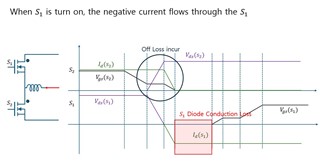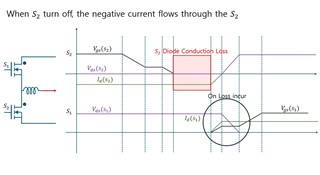Tool/software:
Hello, I have a question about that application note.
I’m trying to calculate efficiency theoretically, and I’m particularly curious about the MOSFET turn-off loss when the current is negative.
In a dual-active-bridge (DAB) converter, if the power transfer is low, it might not achieve Zero Voltage Switching (ZVS).
When ZVS is not achieved, the turn-on current of the MOSFET is positive, but the turn-off current becomes negative.
Here’s my confusion: if the turn-off current of the MOSFET is negative, according to the power loss equation:
Psw=1.2⋅Vds⋅Ids⋅toff⋅fsw
where toff is the MOSFET turn-off time, and fsw is the switching frequency, the resulting power loss would be negative.
Until now, I thought that a negative value means zero loss. However, it suddenly occurred to me: is this correct?
I asked ChatGPT, and the answer was that the current value should be treated as absolute when calculating power loss.
This has left me confused, so I’d like to ask for clarification. What is the correct approach?
Thank you for your help in advance.



